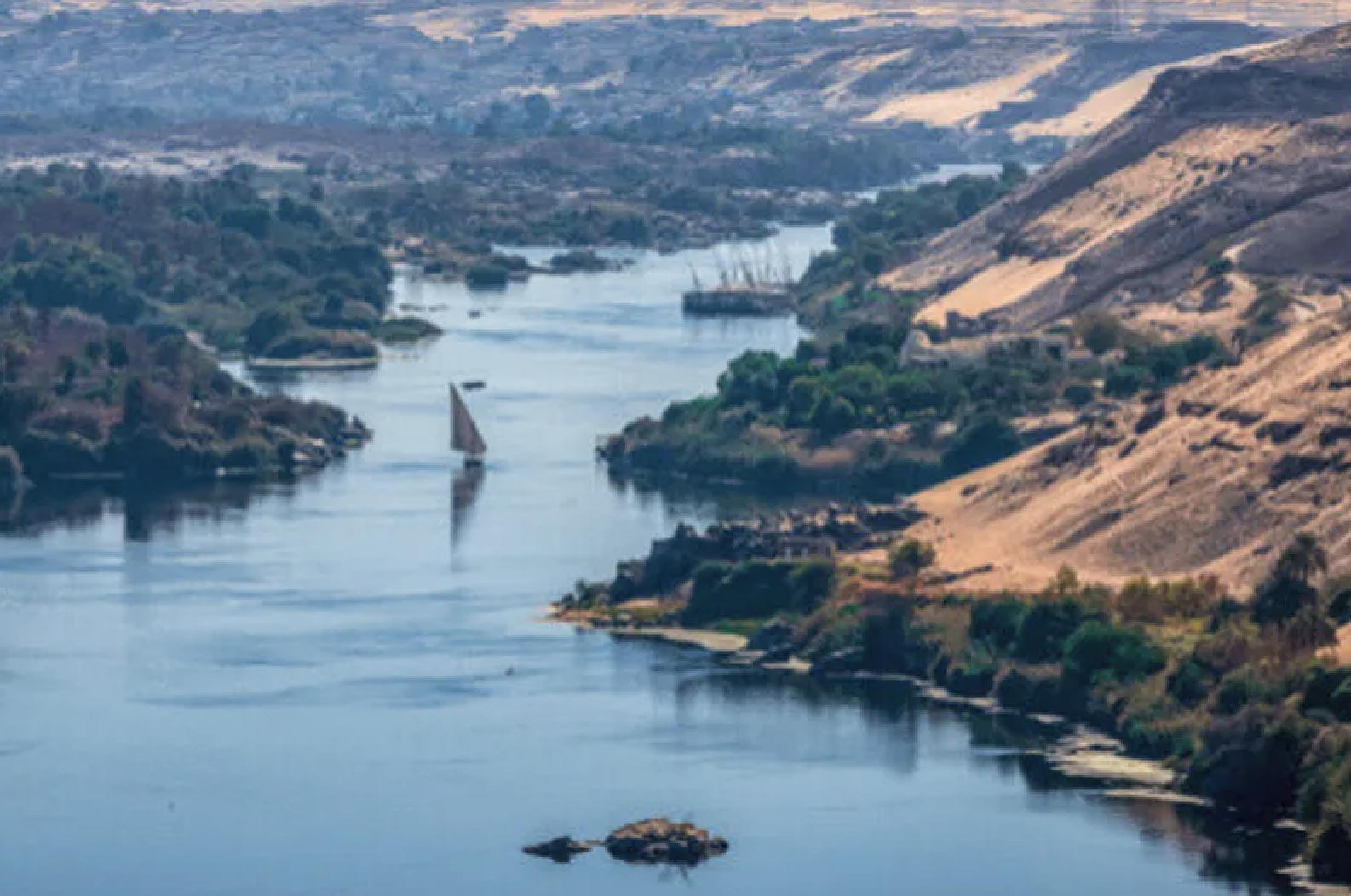Felucca: Riding the Nile Through History
Shahinda Abdalla
Feluccas on the Nile in 1954-55, picture by Mediterranean sea traveler and writer Göran Schildt. (Image Source)
As iconic as the Nile River itself, the felucca — a traditional wooden sailing boat— has been a symbol of transportation, trade, and leisure in Egypt for thousands of years. With its distinctive design and graceful movement, sailing on a felucca offers a unique glimpse into ancient and modern Egypt. The history of the felucca is intertwined with the history of Egypt itself. The earliest known depictions of sailing vessels on the Nile date back to ancient Egypt. Throughout history feluccas have been used for various purposes, from the transportation of goods to fishing and as a means of leisurely travel for both locals and visitors. The design of the felucca has remained relatively unchanged over the centuries, reflecting the mastery of ancient shipbuilding techniques and the enduring practicality of its form. With a sharply raked bow and a single mast carrying a large triangular sail called a lateen, the felucca's design is optimized for navigating the Nile's waters. This timeless design has allowed feluccas to continue playing a vital role in Egypt's maritime culture. The word "felucca" is believed to have originated from the Arabic term "falak," which means "frame" or "ribs of a boat." This etymology reflects the traditional construction of the felucca, which typically involves a wooden frame covered with sails. Over time, the term "felucca" has been adopted into various languages and is commonly used to refer to these iconic sailing boats across the Mediterranean and particularly in Egypt.
A view of the sunset over the Nile River near Aswan City, Egypt. (Image Source)
As the boat glides silently through the water, passengers are treated to breathtaking views of the riverbanks, with historic temples, lush palm groves, and rural villages passing by. The slow pace of the felucca allows for an intimate connection with the river and its surroundings, providing a serene and relaxing experience. The felucca has therefore become a popular choice for tourists seeking to explore the Nile. Visitors to Egypt often have the opportunity to embark on a leisurely felucca cruise, departing from cities such as Luxor or Aswan. These cruises offer a chance to witness the timeless beauty of the Nile and its landscape, while also providing a glimpse into the daily life of local communities along the river.
Beyond its role as a mode of transportation and a tourist attraction, the felucca holds a special place in the hearts of Egyptians. Many locals view the felucca as a symbol of their cultural heritage, and sailing on these traditional boats continues to be a cherished pastime for both young and old. This is particularly visible on a summer evening in Cairo when the Nile turns into a disco ball of feluccas lit with multi-colored fairy lights and hosting parties of people. So whether they are used as a source of income for fishing or trade, or for leisurely travel or social outings, the felucca remains an enduring part of Egyptian life.
Unlike modern motorized boats, the felucca relies solely on the power of the wind and the skill of its crew to navigate the river. Taking on average between 6-10 passengers, this traditional method of sailing provides a sense of connection to the past, as passengers are transported back to a time when the winds were all the fuel one needed to create movement. Feluccas are a reminder of a way of life that was deeply connected to the elements. They are an art form that roots us firmly into our history and allows us to travel the Nile as our ancestors thousands of years ago did. In that way, feluccas are a magical time capsule. While the modern world continues to evolve, the felucca stands as a testament to the enduring legacy of traditional boat building and sailing. Its presence on the Nile serves as a reminder of the rich history and cultural significance of this ancient highway. As the sun sets over the Nile, the experience of sailing on a felucca takes on a magical quality. The tranquil waters, the soft rustle of the sail, and the changing colors of the sky create an atmosphere of serenity and beauty. It is during these moments that one can be so lucky as to witness the essence of one of the longest standing marriages in history — that of the Nile River and the felucca.



